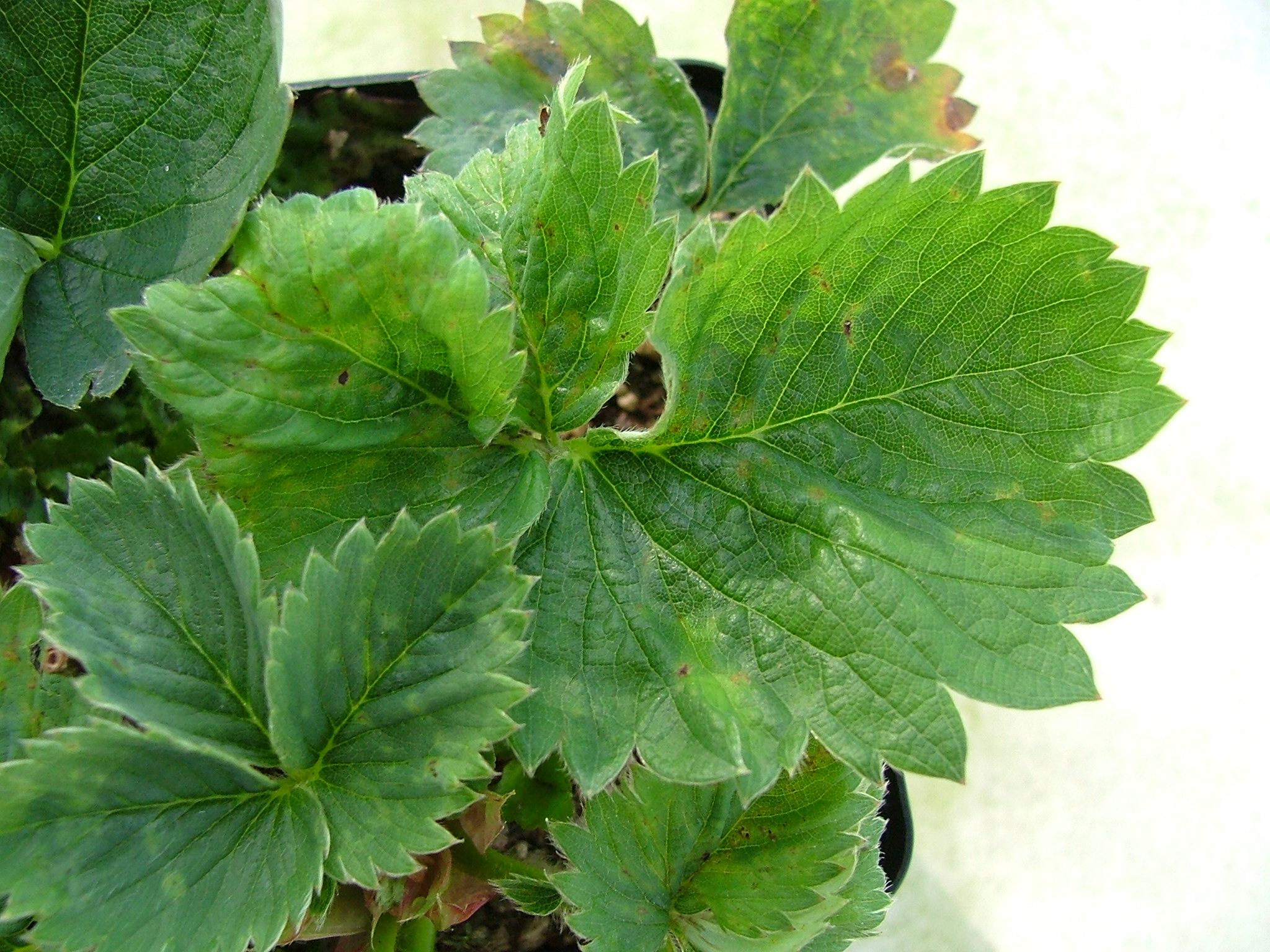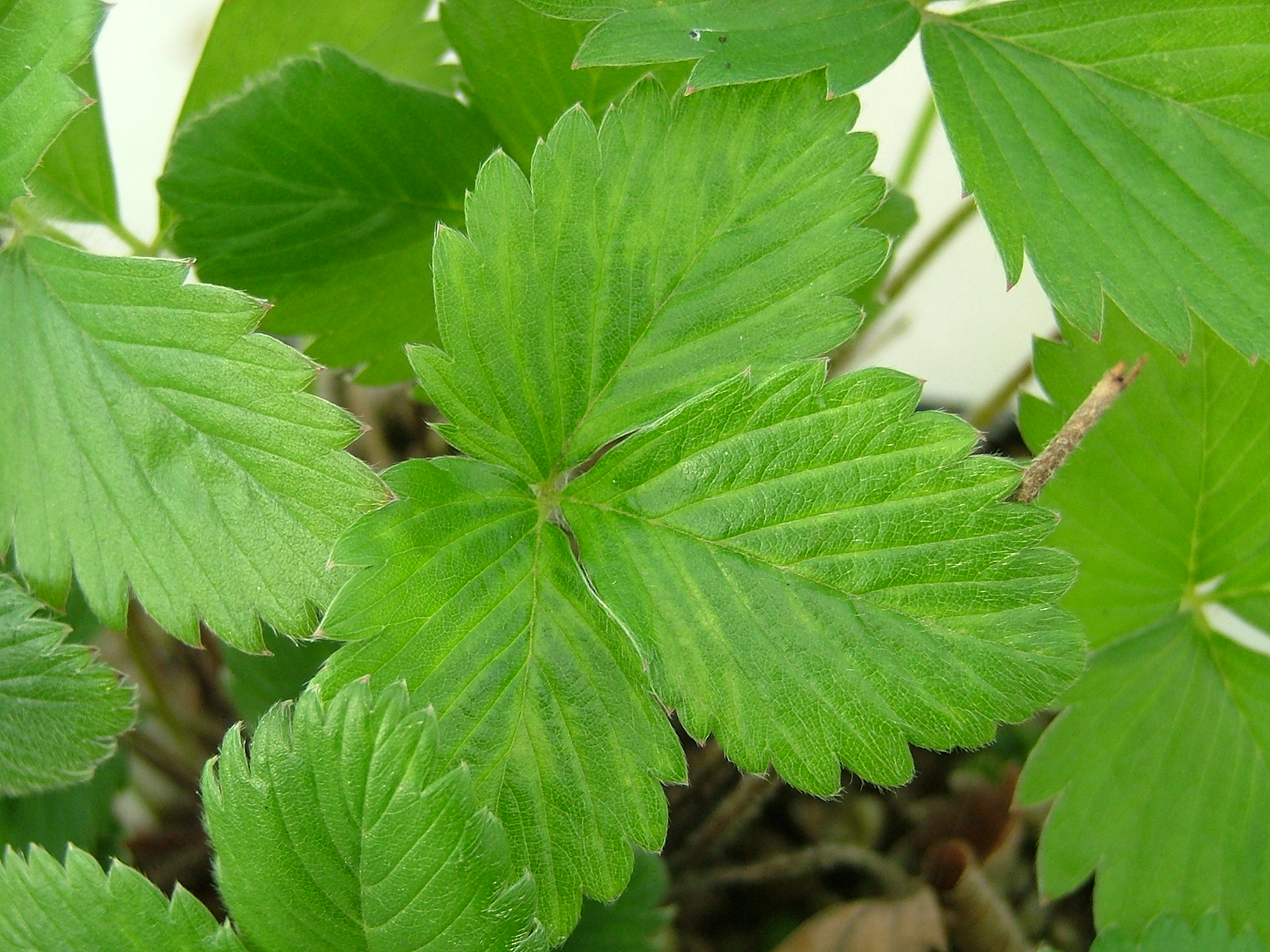Please click here to access the main AHDB website and other sectors.
- Home
- Knowledge library
- Aphids on strawberry: crop damage
Aphids on strawberry: crop damage
From strawberry crinkle virus to mild yellow edge virus, find out which aphid species cause which kind of crop damage and when.
Direct feeding damage and contamination
Aphid species cause different types of crop damage. All species weaken the plant by ingesting sap and excreting honeydew that contaminates the foliage, flowers and fruits. Sooty moulds may grow on the honeydew, causing blackening. Fruits and/or the calyx may be contaminated by aphids themselves, their dead bodies or their cast skins. The different species infest the plants in different ways and may cause very different symptoms of plant distortion.
Strawberry aphid
Strawberry aphids do not distort the foliage, but they do make them sticky with honeydew. This species is most important as a potential virus vector (crinkle and yellow edge virus diseases – see Virus-related damage).
Potato aphid
Potato aphids occur very commonly in strawberry, especially in spring, but cause less direct damage to strawberry than other species. Very heavy infestations will weaken the young shoots, contaminate them with honeydew and reduce yield.
Melon and cotton aphid
Melon and cotton aphids attack foliage and flowers, forming dense colonies in patches which produce copious secretions of honeydew which rapidly become blackened by sooty mould. This aphid can also transmit mottle virus.
Glasshouse-potato aphid
This aphid species causes little direct plant damage to strawberry.
Shallot aphid
Shallot aphids feed during winter and early spring, mainly in the growing points and young leaves, causing strong plant distortion symptoms.
Affected plants become severely stunted when growth commences in spring, the petioles being shortened and the leaves curled and twisted (see below).
Blossom trusses on damaged plants are similarly affected, cropping is much reduced and fruits are small and of poor quality. The symptoms tend to appear first on individual plants or in small patches, but damage soon spreads until large areas are affected. Some growers mistake the damage for that caused by tarsonemid mite (see AHDB Factsheet 02/18).
Shallot aphid damage to strawberry
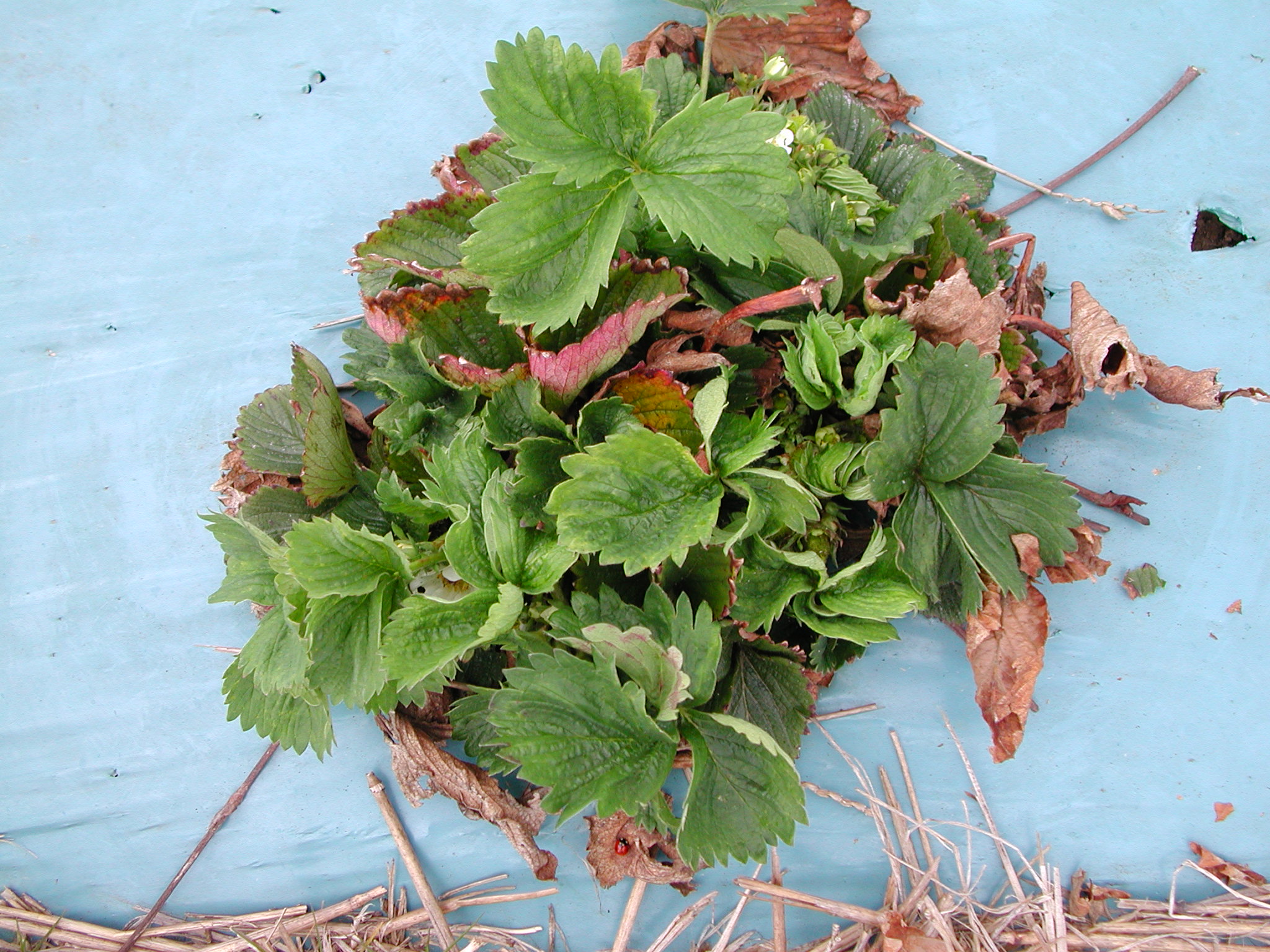
Image copyright NIAB EMR.
Virus-related damage
Several aphid-borne viruses infect strawberry, but the major ones in Europe are strawberry crinkle virus, strawberry mottle virus, strawberry vein banding virus and strawberry mild yellow edge virus. Modern strawberry varieties tend not to show obvious symptoms when infected with one of these aphid-borne viruses. However, the viruses often occur in complexes and cause distortion of plant parts, which may render fruit unmarketable.
Since no practical treatments to cure virus-infected plants are available to the grower, virus diseases of strawberry are predominantly controlled though the use of virus-free planting material, together with control programmes for their transmitting vectors, particularly aphids.
Strawberry aphids, and melon and cotton aphids, transmit virus diseases. Aphicides need to control the aphids rapidly and ideally have a strong repellent and/or anti-feeding effect to help reduce virus transmission. Once a strawberry plant is infected with virus, it remains so for the rest of its life, acting as a source of further infection.
Crinkle virus is common in UK strawberry crops, though many growers have difficulty recognising the symptoms. All cultivars can be infected but may remain symptomless. In sensitive cultivars, leaves may have chlorotic spots and leaflets are uneven in size, distorted and crinkled, and petioles and leaves may be reduced in size (see below). The virus is particularly transmitted by strawberry aphid and a single aphid can spread the virus to many plants.
Symptoms of strawberry crinkle virus, transmitted by the strawberry aphid
Image copyright Naktuinbouw Test Centre, Horst, Netherlands.
Strawberry mottle virus (see below) is the most common virus of strawberries and is present wherever they are grown. The virus has numerous strains, which are often symptomless in strawberry cultivars. Severe strains may cause a decline in vigour and reduce yield by up to 30%. Strawberry mottle virus is vectored by the strawberry aphid and the melon and cotton aphid. The virus can be transmitted in a feeding period of just a few minutes.
Symptoms of strawberry mottle virus, transmitted by the strawberry aphid and the melon and cotton aphid
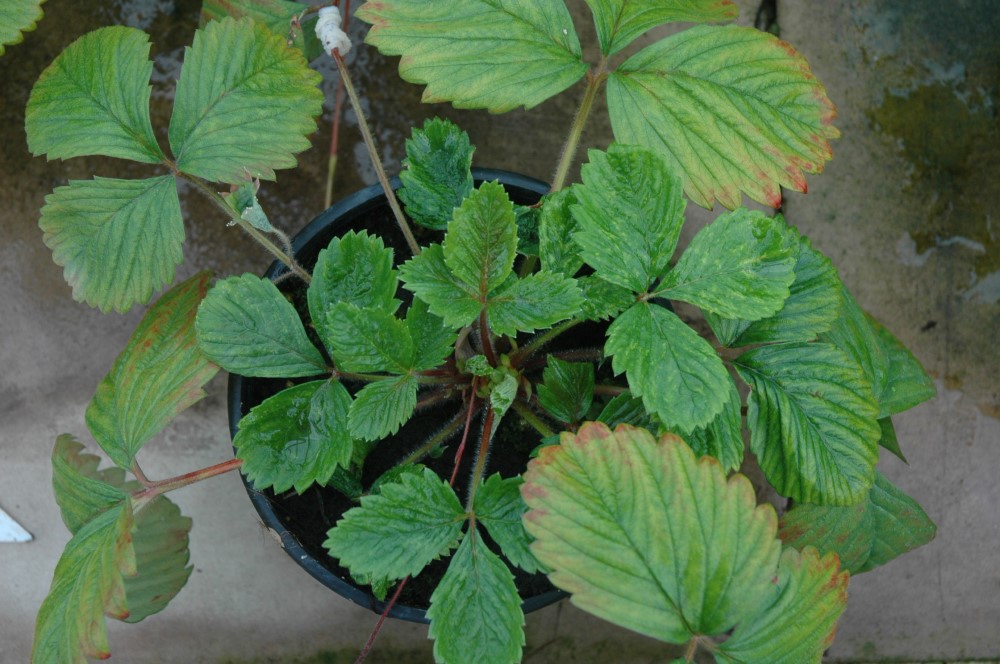
Image copyright Naktuinbouw Test Centre, Horst, Netherlands.
Strawberry vein banding virus is the least common of the four major aphid-borne virus diseases of strawberry. It was previously considered to be absent from the UK by Defra, but there have been outbreaks in recent years.
Three types of symptoms are possible in response to infection by this virus: vein banding, leaf curl and chlorosis. However, most currently grown cultivars are symptomless.
Mixed infections with crinkle virus can cause serious losses in yield, fruit quality and runner production. Interactions with strawberry mottle or mild yellow edge virus result in mild disease. The virus is transmitted by strawberry aphid.
Symptoms of strawberry vein banding virus, transmitted by the strawberry aphid
Image copyright Naktuinbouw Test Centre, Horst, Netherlands.
Strawberry mild yellow edge is one of the most widespread viruses infecting strawberry. In the field, the combination of strawberry mild yellow edge with strawberry mottle or strawberry crinkle virus infection causes disease symptoms previously known as yellows.
The cultivar Cambridge Favourite is particularly susceptible, though most modern cultivars are tolerant and do not show symptoms. The virus is vectored by the strawberry aphid and related species.
Once the virus has been acquired, the vector aphid remains capable of transmitting it for most, if not all, of its life. The virus complex can thus be spread over considerable distances by aphid vectors transported by air currents. Transmission requires long feeding periods by the aphids, and aphicides have proven useful in its control.
Symptoms of strawberry mild yellow edge virus, transmitted by the strawberry aphid
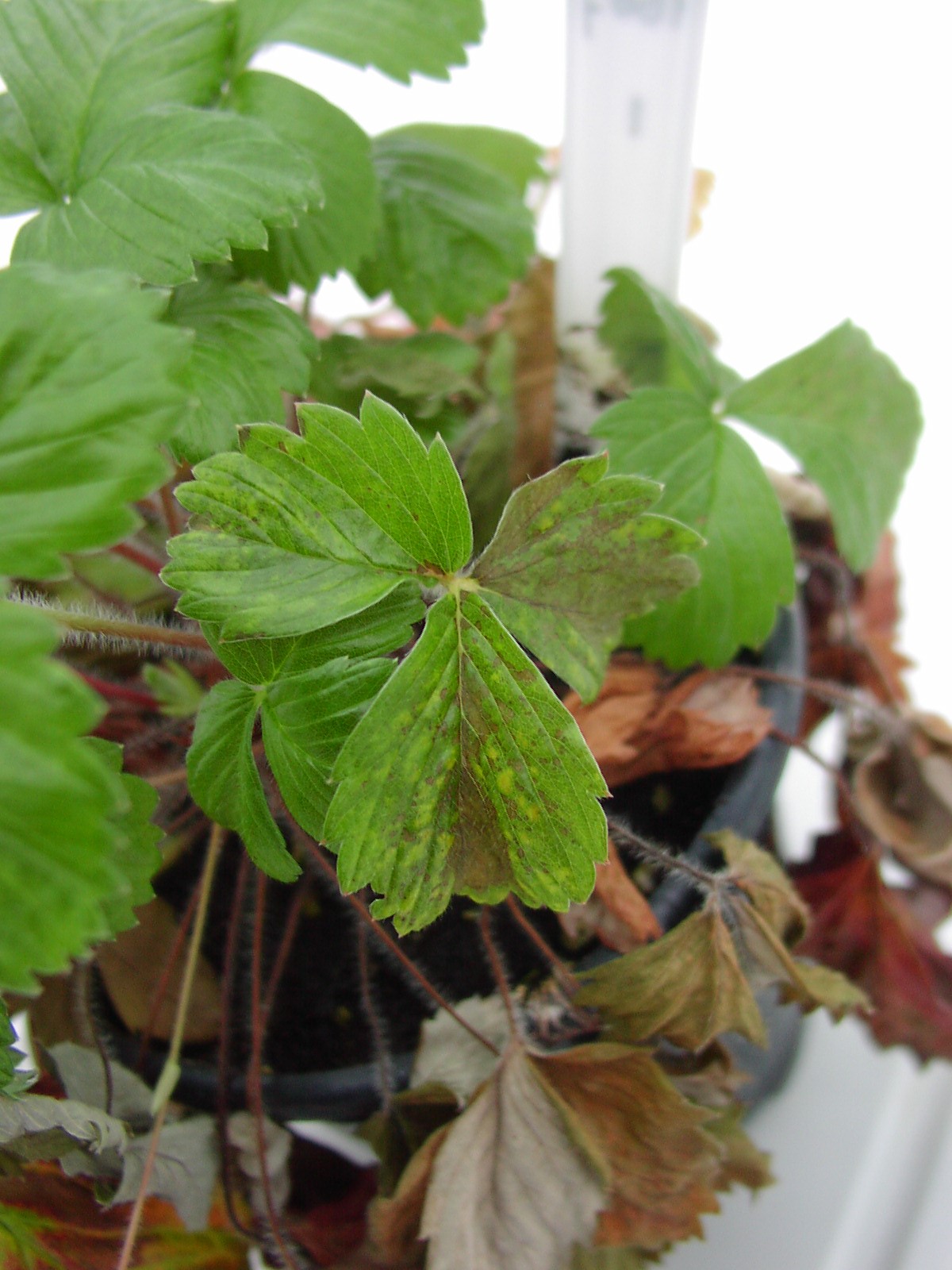
Image copyright Naktuinbouw Test Centre, Horst, Netherlands.


